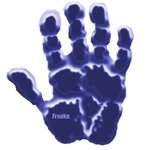MackDigger
Hero Member
- Mar 9, 2013
- 975
- 870
- Primary Interest:
- All Treasure Hunting
I found my first silver coin last week (1942 Merc) at a abandoned home site and was astonished that it was sitting right on top of the ground! Then today I pop out a 1945 wheat from less then a half inch of dirt at a local park. My oldest coin (a roached Indian head cent was only one or two inches. So basically I am asking if this is common or if older coins are normally deeper?
Upvote
0


 And other parks it's all reversed, where the wheaties and silver start at a mere 3".
And other parks it's all reversed, where the wheaties and silver start at a mere 3".



